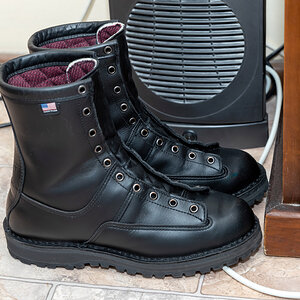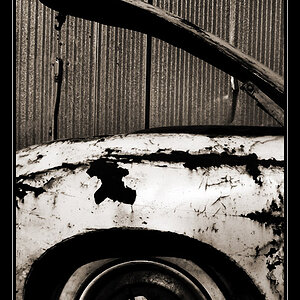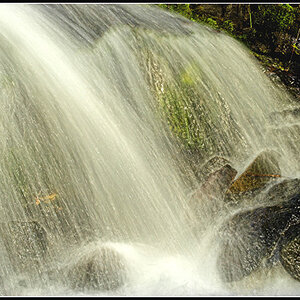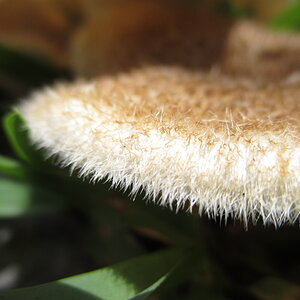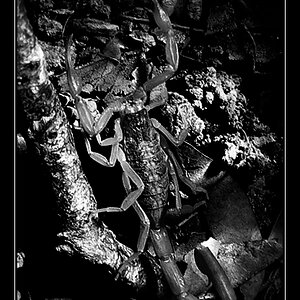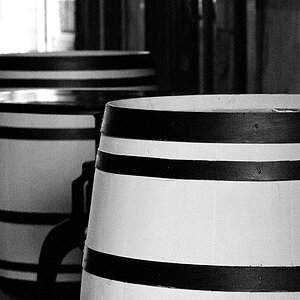FocusTester
TPF Noob!
- Joined
- Dec 29, 2013
- Messages
- 40
- Reaction score
- 3
- Location
- Chicago
- Can others edit my Photos
- Photos OK to edit
This post describes the procedure to clean a DSLR sensor with a can of air (well, it's not really air), also known as a duster. I will try to be fair in outlining the concerns that people have had with this highly controversial method so we can come to some sort of consensus. Note that most photographers and most certainly the camera manufacturers are firmly against this method of cleaning due to damage that you can cause by being careless. If you are faint of heart or a klutz, please leave sensor cleaning to professionals. I will not be held responsible if you damage your camera and/or sensor doing this procedure. Perform it at your own risk. I have and will continue to do so, since it saves me a lot of time and allows me to clean my sensor more frequently and expeditiously.
Let me start by describing the procedure in detail:
1. Start by making sure that the straw that came with your can of duster is firmly attached to the can. You most definitely do not want the straw to fly off during the procedure and hit the sensor, the open shutter or the retracted mirror. Aside from the obvious possibility of damaging the sensor, the tip of the straw often contains a thin layer of congealed biterrant that will leave a mark on the sensor (which can be removed with alcohol [i.e., the "wet" cleaning method]) if it comes into contact. Tape the straw to the can head if necessary or if it has a habit of flying off and/or you are paranoid. I have never had the straw fly off, not even during dusting items (not camera equipment) at full flow strength as long as the straw was properly and firmly inserted into the can.
2. Before you begin, you need to do some pre-cleaning prep by blowing several full force blasts out of the can. Make sure that the can is not pointed anywhere near your camera (or anything/anyone else for that matter) when you do this. Also, make sure that the can stays upright after these pre-blasts and before you actually use it and that not much time passes before the can is employed for the rest of this procedure. This is done to hopefully eliminate any major liquid discharge from the duster if it has been sitting idle for a prolonged period of time.
3. After putting the camera body into sensor cleaning mode and holding it with one hand, you can start blowing gas out of the duster with your other hand at a constant rate. This is the rate that you will determine to be safe (see the Q & A that follow for help with determining a safe rate). You can use the forearm of the arm holding the camera body to check the flow rate/strength. It is imperative that you keep this flow rate constant, so as not to discharge any unnecessary liquid from the can. Do not bring the straw any closer than one inch to your forearm.
4. You want to perform the rest of this procedure indoors and in as clean an area as possible. I recommend an area that is not carpeted and does not have rugs, if possible. If not, do it wherever you can.
5. With the camera in sensor cleaning mode and the body lens opening facing the floor and at a good height from it, start positioning the can and straw so as to blow up into the sensor. Move the straw to the proper distance from the sensor gradually and methodically (see the Q & A that follow to help you determine this distance). You should angle the straw up, but I would not recommend going fully horizontal with the can. I tend to blow from one corner of the sensor along a diagonal to the farthest corner opposite it while holding the straw at about a forty-five degree angle. This seems to get the most dust and particulate matter off the sensor without it landing back and/or more gunk accumulating. You may want to move and/or tilt the body around slightly to blow at various angles to the sensor in order to dislodge any stubborn dirt. I try to avoid moving and tilting the can if possible after the straw nears the sensor, using the camera body to instead control distance and angle of spray. This helps to avoid any unnecessary non-uniform discharge from the can.
6. Finally, after about 5-10 seconds gently move the camera away from the straw and shut the camera body off while its lens opening is still facing the floor.
7. You will want to mount a lens on the camera as soon as possible without moving the camera much and without changing its orientation (from facing down).
8. Perform some test shots to see if the dust is gone and repeat this procedure if necessary. You may need to repeat this several times to get a relatively clean sensor. Depending on your environment, you may run into situations where the sensor has more dust than before the previous attempt. When this happens, I just repeat the procedure and try again.
Here are some questions and answers that will hopefully fairly address the concerns that have been or will be raised in this thread:
Q: It's not really canned air, it's difluoroethane and commonly a mild bitterant put in to discourage abuse (i.e., inhalation). Are these chemicals really safe for my sensor?
A:
Well, let's get the facts out of the way, shall we. Difluoroethane in liquid form can discolor certain plastics. Whether or not it can discolor the plastic and or glass over the sensor has not been shown. I have yet to read or hear a first hand report of sensor and/or filter damage from difluoroethane, despite the fact that many people have cleaned their sensors using this method.
It is not clear exactly what the mild bitterant is. Certainly it can interact with the sensor in unknown ways. Since it is usually ejected mostly at the start of a spraying cycle, you probably needn't worry about it as long as you pre-spray and follow the procedure as stated.
Please note that when the spray leaves the included straw it is still in liquid form. You can easily see this with your own eyes, by looking at the stream as it leaves the straw. However, after a certain very short distance the liquid evaporates and becomes gaseous. This distance depends on how hard you have pressed the trigger. I am in no way advocating cleaning the sensor with the spray coming out of the bottle at full force. You should be spraying at a pressure that is no greater than the pressure produced by a manual device such as the Rocket Air Blaster. So, if you choose to use a duster to clean your sensor make dang sure that you know at what pressure the air coming out of it should be by comparing it with a known blower such as the Rocket Air Blaster just mentioned. You can use the palm of your hand or better yet, the forearm on your less dominant arm to compare. Get used to being able to trigger that particular flow level with your dominant hand.
Furthermore, you really do not want to hit the sensor with liquid spray. Therefore, once you've figured out the correct pressure, make sure that you keep a reasonable distance between the straw end of the duster and the sensor. This distance should take into account the fact that you most certainly don't want to pressurize the camera chamber by not allowing the gas that you are spraying to escape the chamber fast enough. Also, you really want to make sure that you are not hitting the sensor with liquid difluoroethane.
Q: How can I be sure that the spray will not be liquid and leave a residue on and/or discolor my sensor?
A: The easiest way to do this is to take a blank CD or DVD. Once you've figured out the correct flow rate, spray the data end of the disc for about fifteen to thirty seconds and then check the disc for any residue or discoloration. If you see none, you are playing it safe, at least as far as distance from the straw goes. This is not a good way to measure maximum flow rate. Use the steps in the previous question to do this.
Q: But it says on the can that this spray can cause frostbite. I certainly don't want to freeze my sensor and/or cause cold related damage.
A: The sensor is made to tolerate extreme temperatures. There are photographers shooting with DSLRs in Antarctica. What the sensor may not be able to tolerate well is sudden changes in temperature due to pressure changes and evaporation of the liquid coming out of the duster. An easy way to avoid this is to perform the same disc test from the previous question, instead checking for a change in temperature of the disc at the point where the spray is hitting it. If the disc becomes very cold to the touch you are either spraying too close, the force of spray is too strong or you have been spraying for a very long time. Back away the duster can or reduce the flow rate and try again.
Q: What about damage to the shutter and mirror from that fast moving gas?
A: Well let's not be stupid about the process here. You have to make sure that the camera is in sensor cleaning mode as selected from the menu and that the camera battery is fully charged so that the camera does not disengage from cleaning mode mid-process. In other words, at the time of cleaning, the shutter should be open and the mirror should be safely locked up. Camera manufacturers generally allow for a device like the Rocket Air Blaster to be used, so they certainly have to open/secure the shutter and stow away the mirror in such a way that an air cleaning device can be used at a reasonable pressure and rate of flow. If you have followed the advice from the previous questions about controlling the flow rate and distance so as not to blow too much gas too fast into the sensor, I can't imagine that you would damage the shutter and/or mirror, sans some sort of carelessness or accident taking place.
Q: I don't want to propel a pebble into my sensor using the duster!
A: Well, let me start by saying that this cleaning method should not be employed if you have quartz crystals on your sensor. This is meant to remove soft dust particles from things like fabric, carpeting, clothing, etc... If you have been changing lenses in a sand storm, this cleaning technique is not for you. If you are performing the procedure indoors as suggested, any heavy particulate matter in the air will fall. The worst thing that is going to happen is that you will blow a nylon hair or tiny strand of fabric onto the sensor. If this happens and you notice this post-cleaning, just clean again. Hair and tiny fabric strands are very easy to blow off the sensor, either with this technique or with a Rocket Blaster and will not scratch or otherwise damage it.
Q: I have followed your technique, but my sensor is even more dirty than when I started.
A: In one word, repeat! This technique will not free your sensor from 100% of the particles on it. No non-wet solution will. Like other air/gas based techniques we're trying to get the sensor free of large particles and to remove as much of the small particles as we can in as short a time as possible, so that this technique can be applied frequently to keep the sensor relatively clean. There's no point in spending two hours to get the sensor flawlessly clean, for it only to get dirty again the next time you change lenses. The point here is to keep it clean by making the cleaning process easy and fast.
To be continued...
Let me start by describing the procedure in detail:
1. Start by making sure that the straw that came with your can of duster is firmly attached to the can. You most definitely do not want the straw to fly off during the procedure and hit the sensor, the open shutter or the retracted mirror. Aside from the obvious possibility of damaging the sensor, the tip of the straw often contains a thin layer of congealed biterrant that will leave a mark on the sensor (which can be removed with alcohol [i.e., the "wet" cleaning method]) if it comes into contact. Tape the straw to the can head if necessary or if it has a habit of flying off and/or you are paranoid. I have never had the straw fly off, not even during dusting items (not camera equipment) at full flow strength as long as the straw was properly and firmly inserted into the can.
2. Before you begin, you need to do some pre-cleaning prep by blowing several full force blasts out of the can. Make sure that the can is not pointed anywhere near your camera (or anything/anyone else for that matter) when you do this. Also, make sure that the can stays upright after these pre-blasts and before you actually use it and that not much time passes before the can is employed for the rest of this procedure. This is done to hopefully eliminate any major liquid discharge from the duster if it has been sitting idle for a prolonged period of time.
3. After putting the camera body into sensor cleaning mode and holding it with one hand, you can start blowing gas out of the duster with your other hand at a constant rate. This is the rate that you will determine to be safe (see the Q & A that follow for help with determining a safe rate). You can use the forearm of the arm holding the camera body to check the flow rate/strength. It is imperative that you keep this flow rate constant, so as not to discharge any unnecessary liquid from the can. Do not bring the straw any closer than one inch to your forearm.
4. You want to perform the rest of this procedure indoors and in as clean an area as possible. I recommend an area that is not carpeted and does not have rugs, if possible. If not, do it wherever you can.
5. With the camera in sensor cleaning mode and the body lens opening facing the floor and at a good height from it, start positioning the can and straw so as to blow up into the sensor. Move the straw to the proper distance from the sensor gradually and methodically (see the Q & A that follow to help you determine this distance). You should angle the straw up, but I would not recommend going fully horizontal with the can. I tend to blow from one corner of the sensor along a diagonal to the farthest corner opposite it while holding the straw at about a forty-five degree angle. This seems to get the most dust and particulate matter off the sensor without it landing back and/or more gunk accumulating. You may want to move and/or tilt the body around slightly to blow at various angles to the sensor in order to dislodge any stubborn dirt. I try to avoid moving and tilting the can if possible after the straw nears the sensor, using the camera body to instead control distance and angle of spray. This helps to avoid any unnecessary non-uniform discharge from the can.
6. Finally, after about 5-10 seconds gently move the camera away from the straw and shut the camera body off while its lens opening is still facing the floor.
7. You will want to mount a lens on the camera as soon as possible without moving the camera much and without changing its orientation (from facing down).
8. Perform some test shots to see if the dust is gone and repeat this procedure if necessary. You may need to repeat this several times to get a relatively clean sensor. Depending on your environment, you may run into situations where the sensor has more dust than before the previous attempt. When this happens, I just repeat the procedure and try again.
Here are some questions and answers that will hopefully fairly address the concerns that have been or will be raised in this thread:
Q: It's not really canned air, it's difluoroethane and commonly a mild bitterant put in to discourage abuse (i.e., inhalation). Are these chemicals really safe for my sensor?
A:
Well, let's get the facts out of the way, shall we. Difluoroethane in liquid form can discolor certain plastics. Whether or not it can discolor the plastic and or glass over the sensor has not been shown. I have yet to read or hear a first hand report of sensor and/or filter damage from difluoroethane, despite the fact that many people have cleaned their sensors using this method.
It is not clear exactly what the mild bitterant is. Certainly it can interact with the sensor in unknown ways. Since it is usually ejected mostly at the start of a spraying cycle, you probably needn't worry about it as long as you pre-spray and follow the procedure as stated.
Please note that when the spray leaves the included straw it is still in liquid form. You can easily see this with your own eyes, by looking at the stream as it leaves the straw. However, after a certain very short distance the liquid evaporates and becomes gaseous. This distance depends on how hard you have pressed the trigger. I am in no way advocating cleaning the sensor with the spray coming out of the bottle at full force. You should be spraying at a pressure that is no greater than the pressure produced by a manual device such as the Rocket Air Blaster. So, if you choose to use a duster to clean your sensor make dang sure that you know at what pressure the air coming out of it should be by comparing it with a known blower such as the Rocket Air Blaster just mentioned. You can use the palm of your hand or better yet, the forearm on your less dominant arm to compare. Get used to being able to trigger that particular flow level with your dominant hand.
Furthermore, you really do not want to hit the sensor with liquid spray. Therefore, once you've figured out the correct pressure, make sure that you keep a reasonable distance between the straw end of the duster and the sensor. This distance should take into account the fact that you most certainly don't want to pressurize the camera chamber by not allowing the gas that you are spraying to escape the chamber fast enough. Also, you really want to make sure that you are not hitting the sensor with liquid difluoroethane.
Q: How can I be sure that the spray will not be liquid and leave a residue on and/or discolor my sensor?
A: The easiest way to do this is to take a blank CD or DVD. Once you've figured out the correct flow rate, spray the data end of the disc for about fifteen to thirty seconds and then check the disc for any residue or discoloration. If you see none, you are playing it safe, at least as far as distance from the straw goes. This is not a good way to measure maximum flow rate. Use the steps in the previous question to do this.
Q: But it says on the can that this spray can cause frostbite. I certainly don't want to freeze my sensor and/or cause cold related damage.
A: The sensor is made to tolerate extreme temperatures. There are photographers shooting with DSLRs in Antarctica. What the sensor may not be able to tolerate well is sudden changes in temperature due to pressure changes and evaporation of the liquid coming out of the duster. An easy way to avoid this is to perform the same disc test from the previous question, instead checking for a change in temperature of the disc at the point where the spray is hitting it. If the disc becomes very cold to the touch you are either spraying too close, the force of spray is too strong or you have been spraying for a very long time. Back away the duster can or reduce the flow rate and try again.
Q: What about damage to the shutter and mirror from that fast moving gas?
A: Well let's not be stupid about the process here. You have to make sure that the camera is in sensor cleaning mode as selected from the menu and that the camera battery is fully charged so that the camera does not disengage from cleaning mode mid-process. In other words, at the time of cleaning, the shutter should be open and the mirror should be safely locked up. Camera manufacturers generally allow for a device like the Rocket Air Blaster to be used, so they certainly have to open/secure the shutter and stow away the mirror in such a way that an air cleaning device can be used at a reasonable pressure and rate of flow. If you have followed the advice from the previous questions about controlling the flow rate and distance so as not to blow too much gas too fast into the sensor, I can't imagine that you would damage the shutter and/or mirror, sans some sort of carelessness or accident taking place.
Q: I don't want to propel a pebble into my sensor using the duster!
A: Well, let me start by saying that this cleaning method should not be employed if you have quartz crystals on your sensor. This is meant to remove soft dust particles from things like fabric, carpeting, clothing, etc... If you have been changing lenses in a sand storm, this cleaning technique is not for you. If you are performing the procedure indoors as suggested, any heavy particulate matter in the air will fall. The worst thing that is going to happen is that you will blow a nylon hair or tiny strand of fabric onto the sensor. If this happens and you notice this post-cleaning, just clean again. Hair and tiny fabric strands are very easy to blow off the sensor, either with this technique or with a Rocket Blaster and will not scratch or otherwise damage it.
Q: I have followed your technique, but my sensor is even more dirty than when I started.
A: In one word, repeat! This technique will not free your sensor from 100% of the particles on it. No non-wet solution will. Like other air/gas based techniques we're trying to get the sensor free of large particles and to remove as much of the small particles as we can in as short a time as possible, so that this technique can be applied frequently to keep the sensor relatively clean. There's no point in spending two hours to get the sensor flawlessly clean, for it only to get dirty again the next time you change lenses. The point here is to keep it clean by making the cleaning process easy and fast.
To be continued...
Last edited:


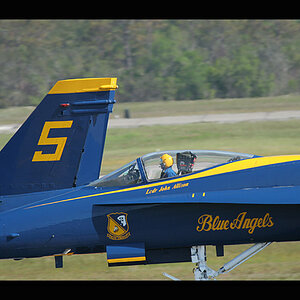
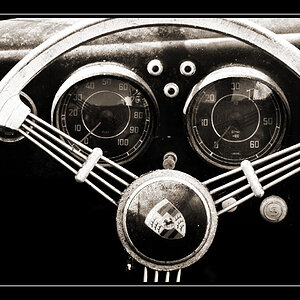

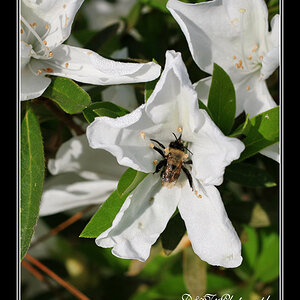
![[No title]](/data/xfmg/thumbnail/37/37607-69784b19e25bd0ba68e92ff4cfdfa8ff.jpg?1619738148)

